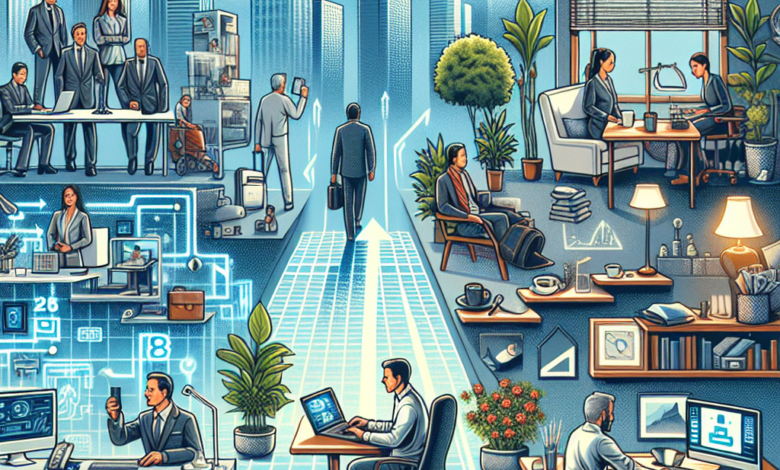From Office to Home: The Evolution of Remote Work in 2023

The evolution of remote work has been a transformative journey that has reshaped the way we perceive and engage with our jobs. As of 2023, it is clear that remote work is more than just a temporary response to the pandemic; it represents a fundamental shift in the workplace landscape. This article explores the trends, technologies, and cultural shifts that have defined remote work in 2023.
The Shift to Hybrid Models
One of the most significant changes in 2023 is the rise of hybrid work models. Organizations are increasingly adopting a flexible approach, allowing employees the option to split their time between the home office and corporate environments. This flexibility caters to diverse employee preferences and enhances work-life balance, leading to increased job satisfaction and productivity. Surveys indicate that a considerable percentage of employees prefer this hybrid model, valuing both the autonomy of remote work and the collaborative opportunities of in-person interactions.
Technology as an Enabler
The technological advancements that emerged during 2020-2021 have matured. In 2023, tools like Zoom, Microsoft Teams, and Slack have become staples in our daily work routines. These platforms have evolved, incorporating features that enhance collaboration—such as virtual breakout rooms, integrated project management tools, and improved security measures. Furthermore, the rise of artificial intelligence and machine learning tools have streamlined workflows, automating repetitive tasks and providing data-driven insights.
The Importance of Mental Health
As remote work continues to flourish, there is a heightened awareness of mental health and well-being issues. The isolation that some employees experienced during full remote work periods led organizations to prioritize mental health resources. In 2023, many companies offer robust employee assistance programs (EAPs), virtual wellness initiatives, and regular check-ins. The integration of wellness tools into remote work culture aims to combat burnout and promote a supportive work environment.
The Global Talent Pool
Remote work has transcended geographical boundaries, creating access to a global talent pool. Employers are no longer limited to hiring talent within a specific region; they can tap into diverse skill sets from around the world. This trend not only enhances an organization’s capability but also fosters inclusivity, as employers can better represent a variety of perspectives within their teams.
Challenges of Remote Work
Despite the benefits, remote work comes with its own set of challenges. Managers face the difficulty of maintaining team cohesion and managing performance without in-person supervision. Issues such as miscommunication and feelings of isolation can hinder collaboration. Companies are experimenting with new managerial practices to address these challenges, including more structured communication protocols, team-building activities, and regular feedback mechanisms.
Redefining Company Culture
In 2023, company culture has transformed to adapt to remote work realities. Organizations are focused on creating inclusive cultures that extend beyond the office. Virtual team-building events, flexible work hours, and a commitment to diversity and inclusion have become central tenets of modern corporate culture. Employers are increasingly recognizing the need to engage remote employees through virtual recognition programs and other initiatives that foster community and belonging.
Conclusion
The evolution of remote work in 2023 demonstrates that this trend is not merely a byproduct of recent events but a substantial shift in how we work. Hybrid models, technological advancements, an emphasis on mental health, and the expansion of the global talent pool are key characteristics of this new landscape. As companies continue to navigate the complexities of remote work, the focus will remain on creating adaptable, inclusive, and supportive environments where employees can thrive. The future of work is here, and it is more flexible than ever before.
